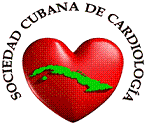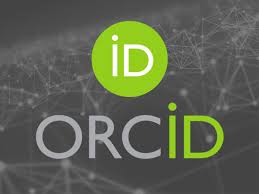Flavonoides catequina, hesperidina y rutina: sus efectos sobre la salud cardiovascularrapéutica cardiovascular.
Palabras clave:
flavonoides, cardiovascular, corazón, catequina, hesperidina, rutina.Resumen
Introducción: Los flavonoides constituyen una familia muy diversa de compuestos polifenólicos que se biosintetizan en todas las plantas terrestres. El conocimiento de las acciones biológicas de estos compuestos ha alcanzado gran interés por parte de la comunidad científica, ya que el hombre los consume con los vegetales, infusiones y vinos. En este sentido, los flavonoides han mostrado propiedades muy estimadas en medicina, como antimicrobianos, anticancerígenos, en la disminución del riesgo de enfermedades cardiovasculares, entre otras.
Objetivos: Revisar y actualizar los conocimientos sobre los flavonoides en general y, en particular, sobre la catequina, hesperidina y rutina, dado que se encuentran presentes en diversos vegetales y frutas, así como sus efectos cardiovasculares.
Métodos: Se realizó una revisión de la bibliografía internacional actualizada. La búsqueda se desarrolló en Google Académico y se consultaron artículos de libre acceso en las bases de datos PubMed y SciELO. Se emplearon los términos: cardiovascular, flavonoides, corazón, catequina, hesperidina y rutina, según el descriptor de Ciencias de la Salud.
Resultados: Se efectuó una reseña histórica del descubrimiento de estas moléculas y sus estudios avanzados, con énfasis en sus efectos sobre la salud cardiovascular.
Conclusiones: Los flavonoides catequina, hesperidina y rutina poseen propiedades cardioprotectoras y efectos biológicos relacionados con la salud cardiovascular.
Descargas
Citas
Middleton E, Kandaswami C, Theoharides TC. The effects of plant flavonoids on mammalian cells: Implications for inflammation, heart disease, and cancer. Pharmacol. Rev. 2000 [acceso 22/01/2024];52:673-751. Disponible en: https://pubmed.ncbi.nlm.nih.gov/11121513/
Barreca MM, Alessandro R, Corrado C. Effects of flavonoids on cancer, cardiovascular and neurodegenerative diseases: Role of NF-κB signaling pathway. Int. J. Mol. Sci. 2023;24:9236. DOI: https://doi.org/10.3390/ijms24119236
Al-Khayri JM, Sahana GR, Nagella P, Joseph BV, Alessa FM, Al-Mssallem MQ. Flavonoids as potential anti-Inflammatory molecules: A review. Molecules 2022;27:2901. DOI: https://doi.org/10.3390/molecules27092901
Almeida B, Carvalho A, Cortes SF, Soares V. Vascular effects of flavonoids. Curr. Med. Chem. 2016 [acceso 22/01/2024];(1):87-102. Disponible en: https://benthamscience.com/article/71756
Martínez-Flórez S, González-Gallego J, Culebras JM, Tuñón MJ. Los flavonoides: propiedades y acciones antioxidantes. Nutr Hosp. 2002 [acceso 22/01/2024];17:271-8. Disponible en: http://www.nutricionhospitalaria.com/pdf/3338.pdf
Wright B, Spencer PE, Lovegrove A, Gibbins M. Insights into dietary flavonoids as molecular templates for the design of anti-platelet drugs. Cardiovasc Res. 2013 [acceso 22/01/2024];97:13-22. Disponible en: https://www.ncbi.nlm.nih.gov/pmc/articles/PMC3527766/
Fraga CG, Galleano M, Verstraeten SV, Oteiza PI. Basic biochemical mechanism behind the health benefits of polyphenols. Mol Asp Med. 2010 [acceso 22/01/2024];31:435-45. Disponible en: https://pubmed.ncbi.nlm.nih.gov/20854840/
Salvamani S, Gunasekaran B, Shaharuddin NA, Ahmad SA, Shukor MY. Antiartherosclerotic effects of plant flavonoids. Biomed Res Int. 2014 [acceso 22/01/2024]:480258. Disponible en: https://www.ncbi.nlm.nih.gov/pmc/articles/PMC4058282/
Fusi F, Trezza A, Tramaglino M, Sgaragli G, Saponara S, Spiga O. The beneficial health effects of flavonoids on the cardiovascular system: focus on K+ channels. Pharmacological Research. 2020. DOI: https://doi.org/10.1016/j.phrs.2019.104625
Tavan M, Hanachi P, de la Luz Cádiz-Gurrea M, Segura Carretero A, Mirjalili MH. Natural phenolic compounds with neuroprotective effects. Neurochem Res. 2024 [acceso 22/01/2024];49(2):306-26. DOI: https://doi.org/10.1007/s11064-023-04046-z
Pérez-Vizcaíno F, Duarte J. Flavonols and cardiovascular disease. Mol Asp Med. 2010 [acceso 22/01/2024];31:478-94. Disponible en: https://pubmed.ncbi.nlm.nih.gov/20837053/
López JJ, Haouari EI, Jardin M, Alonso N, Regodón S, Diez-Bello R, et al. Flavonoids and platelet-derived thrombotic disorders. Curr Med Chem. 2019 [acceso 22/01/2024];26(39):7035-47. Disponible en: https://pubmed.ncbi.nlm.nih.gov/29667548/
Yamagata K, Yamori Y. Inhibition of endothelial dysfunction by dietary flavonoids and preventive effects against cardiovascular disease. J Cardiovasc Pharmacol. 2020;75(1):1-9. DOI: https://doi:10.1097/FJC.0000000000000757
Schar MY, Curtis PS, Hazim S, Ostertag LM, Kay CD, Porter JF, et al. Orange juice–derived flavanone and phenolic metabolites do not acutely affect cardiovascular risk biomarkers: a randomized, placebo-controlled, crossover trial in men at moderate risk of cardiovascular disease. Am J Clin Nutr. 2015 [acceso 22/01/2024];101:931-8. Disponible en: https://www.ncbi.nlm.nih.gov/pmc/articles/PMC4409690/
Álvarez-Collazo J, López-Requena A, Galán L, Talavera A, Álvarez JL, Talavera K. The citrus flavanone hesperetin preferentially inhibits slow‐inactivating currents of a long QT syndrome type 3 syndrome Na+ channel mutation. Br J Pharmacol. 2019;176(8):1090-1105. DOI: https://doi.org/10.1111/bph.14577
Scholz EP, Zitron E, Kiesecker C, Lück S, Thomas D, Kathöfer S, et al. Inhibition of cardiac HERG channels by grapefruit flavonoid naringenin: implications for the influence of dietary compounds on cardiac repolarization. Naunyn. Schmiedebergs Arch Pharmacol. 2005 [acceso 22/01/2024];371(6):516-25. Disponible en: https://link.springer.com/article/10.1007/s00210-005-1069-z
Zitron E, Scholz E, Owen RW, Lück S, Kiesecker C, Thomas D, et al. QTc prolongation by grapefruit juice and its potential pharmacological basis: HERG channel blockade by flavonoids. Circulation. 2005;111(7):835-8. DOI: https://www.ahajournals.org/doi/pdf/10.1161/01.CIR.0000155617.54749.09
Saponara S, Fusi F, Iovinelli D, Ahmed A, Trezza A, Spiga O, et al. Flavonoids and hERG channels: Friends or foes? Eur J Pharmacol. 2021;15;899:174030. DOI: https://doi.org/10.1016/j.ejphar.2021.174030
Yang JY, Ma YX, Liu Y, Peng XJ, Chen XZ. A Comprehensive review of natural flavonoids with anti-SARS-CoV-2 activity. Molecules. 2023;17;28(6):27-35. DOI: https://doi.org/10.3390/molecules28062735
Dweck AC. The internal and external use of medicinal plants. Clin Dermatol. 2009 [acceso 22/01/2024];27:148-58. Disponible en: https://pubmed.ncbi.nlm.nih.gov/19167996/
Isemura M. Catechin in human health and disease. Molecules. 2019;24(3):528. DOI: https://doi.org/10.3390/molecules24030528
Latos-Brozio M, Masek A. Structure-activity relationships analysis of monomeric and polymeric polyphenols (quercetin, rutin and catechin) obtained by various polymerization methods. Chem Biodivers. 2019;16(12):e1900426. DOI: https://doi.org/10.1002/cbdv.201900426
Galán Martínez L, Herrera Estrada I, Fleites Vázquez A. Cardiac effects of (−)- epigallocatechin on isolated rat hearts. Global J Med Res. 2018 [acceso 22/01/2024];18(2):21-4. Disponible en: https://globaljournals.org/GJMR_Volume18/4-Cardiac-Effects-of-Epigallocatechin.pdf
Guo J, Li K, Lin Y, Liu Y. Protective effects and molecular mechanisms of tea polyphenols on cardiovascular diseases. Front Nutr. 2023;28:10:1202378. DOI: https://doi.org/10.3389/fnut.2023.1202378
Jackson D, Connolly K, Batacan R, Ryan K, Vella R, Fenning A. (-)-Epicatechin reduces blood pressure and improves left ventricular function and compliance in deoxycorticosterone acetate-salt hypertensive rats. Molecules. 2018;23:1511. DOI: https://doi.org/10.3390/molecules23071511
Li JW, Wang XY, Zhang X, Gao L, Wang LF, Yin XH. (-)-Epicatechin protects against myocardial ischemia induced cardiac injury via activation of the PTEN/PI3K/AKT pathway. Mol Med Rep. 2018;17:8300-8. DOI: https://doi.org/10.3892/mmr.2018.8870
Lau SO, Georgousopoulou EN, Kellett J, Thomas J, McKune A, Mellor D, et al. The effect of dietary supplementation of green tea catechins on cardiovascular disease risk markers in humans: A systematic review of clinical trials. Beverages. 2016;2:16. DOI: https://doi.org/10.3390/beverages2020016
Ganeshpurkar A, Saluda AK. The pharmacological potential of rutin. Saudi Pharmac J. 2017 [acceso 22/01/2024];25:149-64. Disponible en: https://www.ncbi.nlm.nih.gov/pmc/articles/PMC5355559/
Galán-Martínez L, Herrera-Estrada I, Fleites-Vázquez A. Direct actions of the flavonoids naringenin, quercetin and genistein on rat cardiac and vascular muscles. J Pharm Pharmacogn Res. 2018 [acceso 22/01/2024];6(3):158-66. Disponible en: https://www.redalyc.org/journal/4960/496055772003/html/
Bhandary B, Piao CS, Kim DS, Lee GH, Chae SW, Kim HR, et al. The Protective Effect of Rutin against Ischemia/reperfusion-associated Hemodynamic Alteration through Antioxidant Activity. Arch. Pharm. Res. 2012;35(6):1091-7. DOI: https://doi.org/10.1007/s12272-012-0617-6
Fei J, Sun Y, Duan Y, Xia J, Yu S, Ouyang P, et al. Low concentration of rutin treatment might alleviate the cardiotoxicity effect of pirarubicin on cardiomyocytes via activation of PI3K/AKT/mTOR signaling pathway. Biosc Rep. 2019;39. DOI: https://doi.org/10.1042/BSR20190546
Mahmoud AM, Hernández RJ, Sandhu MA, Hussein OE. Beneficial Effects of Citrus Flavonoids on Cardiovascular and Metabolic Health. Hindawi Oxidat Med Cell Long. 2019:5484138. DOI: https://onlinelibrary.wiley.com/doi/epdf/10.1155/2019/5484138
Wunpathe C, Potue P, Maneesai P, Bunbupha S, Prachaney P, Kukongviriyapan, et al. Hesperidin suppresses renin-angiotensin system mediated NOX2 overexpression and sympathoexcitation in 2K-1C hypertensive rats. Am J Chin Med. 2018;46(4):751-7. DOI: https://www.worldscientific.com/doi/10.1142/S0192415X18500398
Agrawal YO, Sharma PK, Shrivastava B, Ojha S, Upadhya HM, Arya DS, et al. Hesperidin produces cardioprotective activity via PPAR-γ pathway in ischemic heart disease model in diabetic rats. PLoS ONE. 2014 [acceso 22/01/2024];9(11):e111212. Disponible en: https://www.ncbi.nlm.nih.gov/pmc/articles/PMC4219710/
Yamamoto M, Suzuki A, Jokura H, Yamamoto N, Hase T. Glucosyl hesperidin prevents endothelial dysfunction and oxidative stress in spontaneously hypertensive rats. Nutrition 2008 [acceso 22/01/2024];24(5):470-6. Disponible en: https://www.sciencedirect.com/science/article/abs/pii/S0899900708000336?via%3Dihub
Mohammadi M, Ramezani-Jolfaie N, Lorzadeh E, Khoshbakht Y, Salehi-Abargouei A. Hesperidin, a major flavonoid in orange juice, might not affect lipid profile and blood pressure: A systematic review and meta-analysis of randomized controlled clinical trials. Phytother Res. 2019 [acceso 22/01/2024];33:534-45. Disponible en: https://pubmed.ncbi.nlm.nih.gov/30632207/
Pla-Pagá L, Companys J, Calderón-Pérez L, Llauradó E, Solá R, Valls RM, et al. Effects of hesperidin consumption on cardiovascular risk biomarkers: a systematic review of animal studies and human randomized clinical trials. Nutr. Rev. 2019;77(12):845-64. DOI: https://doi.org/10.1093/nutrit/nuz036
Álvarez-Collazo J, López-Medina AI, Rodríguez AA, Álvarez JL. Mechanism of the negative inotropic effect of naringin in mouse heart. J Pharm Pharmacogn Res. 2014 [acceso 22/01/2024];2(5):148-57. Disponible en: https://jppres.com/jppres/volume-2-issue-5-in-progress/
López-Medina AI, Álvarez-Collazo J, Rodríguez AA, Morón-Rodríguez F, Cabrera-Suárez H, Álvarez JL. Direct actions of naringin on rat cardiac and vascular smooth muscle. Bol Latinoam Caribe Plant Med Aromat. 2014 [acceso 22/01/2024];13:238-48. Disponible en: https://blacpma.ms-editions.cl/index.php/blacpma/issue/archive
Descargas
Publicado
Cómo citar
Número
Sección
Licencia
Derechos de autor 2024 Loipa Galán Martínez

Esta obra está bajo una licencia internacional Creative Commons Atribución-NoComercial 4.0.
Aquellos autores/as que tengan publicaciones con esta revista, aceptan los términos siguientes:- Los autores/as conservarán sus derechos de autor y garantizarán a la revista el derecho de primera publicación de su obra, el cuál estará simultáneamente sujeto a la Attribution-NonCommercial 4.0 Internacional (CC BY-NC 4.0) que permite a terceros compartir la obra siempre que se indique su autor y su primera publicación esta revista. o admite fines comerciales. Permite copiar, distribuir e incluir el artículo en un trabajo colectivo (por ejemplo, una antología), siempre y cuando no exista una finalidad comercial, no se altere ni modifique el artículo y se cite apropiadamente el trabajo original. El Comité Editorial se reserva el derecho de introducir modificaciones de estilo y/o acotar los textos que lo precisen, comprometiéndose a respectar el contenido original.
- Los autores/as podrán adoptar otros acuerdos de licencia no exclusiva de distribución de la versión de la obra publicada (p. ej.: depositarla en un archivo telemático institucional o publicarla en un volumen monográfico) siempre que se indique la publicación inicial en esta revista.
- Se permite y recomienda a los autores/as difundir su obra a través de Internet (p. ej.: en archivos telemáticos institucionales o en su página web) antes y durante el proceso de envío, lo cual puede producir intercambios interesantes y aumentar las citas de la obra publicada. (Véase El efecto del acceso abierto).








